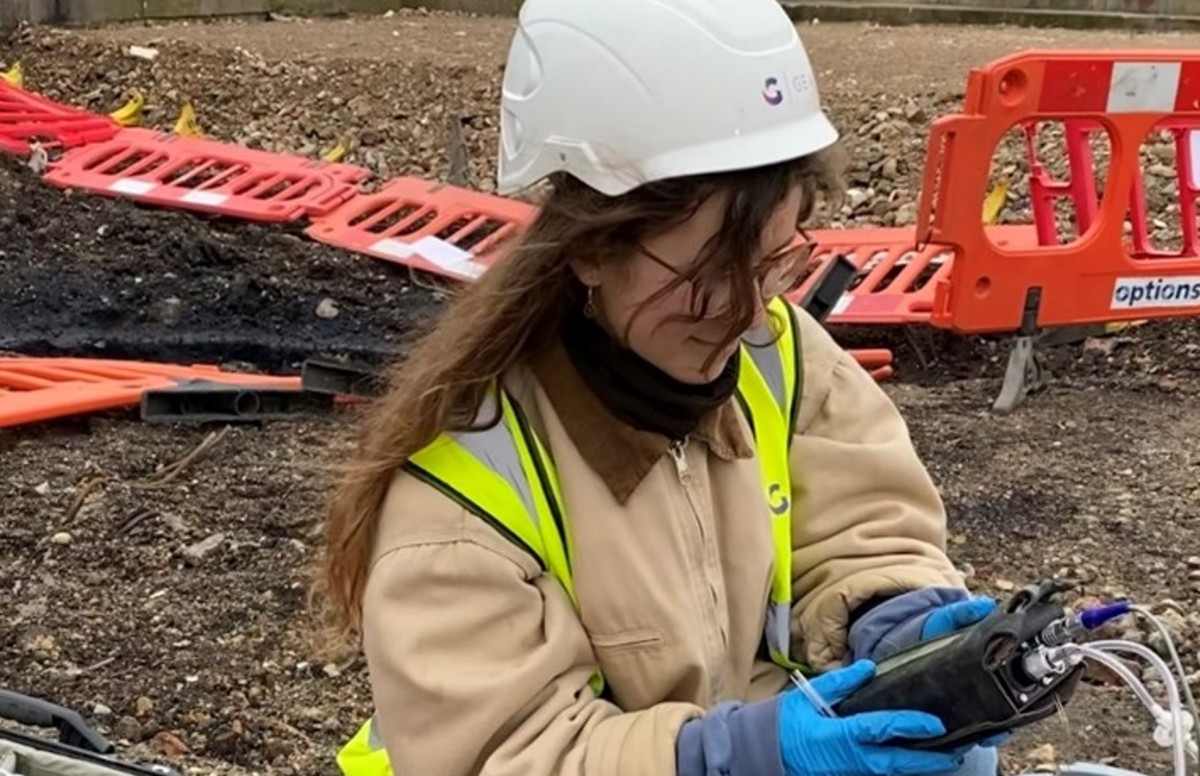7 Simple Techniques For Geotheta
Table of ContentsThe Facts About Geotheta UncoveredAn Unbiased View of GeothetaThe Best Guide To GeothetaGetting The Geotheta To Work
They team up with civil engineers, architectural designers, architects, and other experts to incorporate geotechnical factors to consider into the general project design and building process. This calls for reliable team effort, sychronisation, and communication to ensure that the geotechnical facets straighten with the job goals and satisfy governing needs.Mining & Products Engineering: Concepts of boring, penetration prices, and aspects impacting the choice of exploration approach. Qualities of dynamites, firing systems and blast patterns. Blowing up strategies in surface and underground functions. Unique blasting strategies at excavation boundaries. Resonance and noise control. Mechanical and continuous strategies to fragmentation, including longwall shearing and fullface boring.
Modelling of piece and fragment dimension distributions; comminution as a transfer feature. Comminution modern technology: crushing, grinding, size category. Integrated analysis of fragmentation and comminution operations. Offered by: Mining & Materials Design.
The 30-Second Trick For Geotheta
Bachelor's degree programs in civil, geotechnical, geological, and environmental design normally last 4 years and include general education training courses in English, social scientific research, and the humanities, as well as programs in innovative maths, architectural geology, and liquid mineralogy. (https://www.ted.com/profiles/47432098)
Geotechnical design involves the evaluation of the dirt and rock problems at a specific website, and their implications for the advancement of that website. As the majority of structures count on the ground for assistance, it lacks surprise that an in-depth understanding of the ground problems, and the viability of foundation systems, are crucial to the lasting stability and performance of the structure or framework.
Being experts in the examination of geological formations and ground behavior, geotechnical designers perform scientific examinations and screening to recognize the effect these geological formations might carry the style and construction of structure, civil and framework jobs. This proficiency is important for the style and building of buildings, roads, tunnels, dams, bridges, and water system and sewage systems.
The geotechnical group at Douglas Partners regularly seek advice from designers, design designers, designers, and building contractors to make referrals on layout and growth propositions to make sure that the developed structures are appropriately developed for the ground conditions. The design of footing systems requires to think about the weight of the structure, the ability of the ground to sustain that weight with each other with activity resistances and reliable construction.
Things about Geotheta
This task is greatly simplified by the usage of our Douglas Map geospatial platform that makes this information conveniently available in a simple to utilize web internet browser user interface. A geotechnical engineer will certainly direct the exploration of boreholes and test pits to accumulate soil and other samples, and additionally evaluate surface features and ground exposures to form a geotechnical version of the subsurface problems.
Depending upon the project type and ground conditions encountered, research laboratory testing may among various other points evaluate toughness, compressibility, reactivity and/or permeability of dirt and rock examples. After this data is accumulated and collated, the outcomes are used for a geotechnical design of the website, which is typically provided as sections throughout the site.

A geotechnical investigation naturally can just assess the ground conditions at the places drilled or dug deep into. All-natural variants in dirt and rock conditions can occur throughout a site and between test places. It is consequently good practice that the geotechnical engineer be kept throughout building and construction of the project to give on-site confirmation that the ground problems encountered are consistent with the expectations and guidance offered in the geotechnical investigation report.
The Definitive Guide to Geotheta
Geotechnical designers use their extensive knowledge of soil and rock to evaluate risk and address issues on diverse infrastructure projectsGeotechnical design is a specialist branch of civil design which checks out the practices of earth materials and the application of dirt and rock auto mechanics. Geo Tech Engineering. As a geotechnical engineer, you will certainly examine the physical, mechanical and chemical residential properties of soil and rock in order to make structures, keeping frameworks and earthworks
Geotechnical design is carefully linked to and overlaps with, both design geology and ground engineering - https://penzu.com/p/952dfde2dba9ee4f. It's feasible to be experts in geotechnics or help a geotechnical firm yet be called a design geologist or a ground designer. As a geotechnical engineer, you'll need to: construct and preserve relationships with customers and other experts included in the site, throughout each projectmaintain safety and security requirements on site bear in mind expense implications when you make recommendationsstudy geological maps and aerial photos from a variety of resources and from different time periodsexamine construction plans to see exactly how feasible they are based upon your understanding of the siteinvestigate risks or geological threats for the sitesearch for ecologically sensitive attributes, such as garbage dump begin to develop valid and interpretive ground modelsplan area investigationsdrill and analyse examples of bedrock, dirt, groundwater and extra products monitor other professionals on sitesolve technological issues as they emerge, such as unforeseen frameworks at drill sitesmonitor problems during and after building and construction to see to it frameworks are stable in the brief and lengthy termadding data gathered on website to your initial researchcreating geotechnical estimations, drawings, and two or three-dimensional computer system models analyzing the datamaking suggestions her explanation regarding the proposed use of the site
